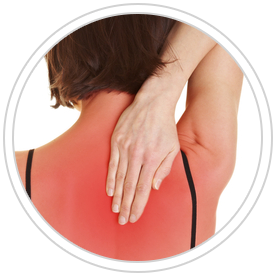Things You Should Know About Sunburn
 Because we live closer to the equator, San Diegans are at greater risk than northerners for sunburn. Sunburn is overexposure to ultraviolet (UV) rays resulting in redness, pain, swelling, and even blistering. Everyone is susceptible, even dark-skinned people. Why worry about sunburn? Avoiding overexposure is essential in avoiding skin cancer.
Because we live closer to the equator, San Diegans are at greater risk than northerners for sunburn. Sunburn is overexposure to ultraviolet (UV) rays resulting in redness, pain, swelling, and even blistering. Everyone is susceptible, even dark-skinned people. Why worry about sunburn? Avoiding overexposure is essential in avoiding skin cancer.
Tri-City Cancer Information
Cancer Services & Treatments
Skin Cancer Is On The Rise
Skin cancer is rapidly becoming the most common cancer in the United States. More than one million new cases of skin cancer are diagnosed each year, with incidents in the Southwest U.S. reaching epidemic proportions.
As the Earth’s protective ozone layer continues to thin, more harmful rays assault us, and everyone’s risk goes up. More than ever, we need to protect ourselves and our children from sunburn.
No Such Thing As A Safe Tan
Overexposure to ultraviolet (UV) rays damages your skin and eyes. There’s two kinds of UV: UVA increases the risk of eye cataracts, skin aging, and skin cancer, and UVB causes sunburn and can lead to skin cancer.
Damage from overexposure to UV rays can occur at the beach or pool, at a “safe” tanning salon, or any time you are outside in the sun. Unfortunately, that’s what your attractive tan is-damage. Freckling and sunburn are also signs of damage. In the long term, damage results in wrinkled, leathery skin and may lead to skin cancer.
Treatment for Sunburn
- Do not apply lotions or petroleum jelly during the first 48 hours – these products hold in the heat and may cause more damage!
- Use cool, wet compresses. Do not use ice.
- Take cool oatmeal baths (Aveeno, etc.).
- Apply aloe in first 48 hours.
- Apply moisturizing lotions after 48 hours.
- Take aspirin or Tylenol to ease the pain.
- Seek medical treatment for serious burns.
Daily UV Index
A daily UV index has been developed by the U.S. Environmental Protection Agency (EPA) and the National Weather Service (NWS). This index tells you how many minutes you can spend in the sun before damaging your skin, at your particular location. A High or Very High index reading means you have about 10 to 15 minutes before damage begins. San Diego in July generally has a High reading.
More information:
Skin Cancer Foundation
Tips for Sun Safety
- Avoid the midday sun between the hours 10 am-4 pm.
- Always seek shade. It’s your best protection from the sun. Keep in mind that the sun’s UV rays can penetrate clouds.
- Wear a hat to take the shade with you. Your eyes, ears, face, and the back of your neck are especially prone to overexposure.
- Cover up. Tightly woven, loose-fitting clothing protects you from UV rays. Dark colors provide more protection than light colors.
- Apply sun protection with SPF 15 or higher every day. Reapply sunscreen (even the water-resistant kind) every 2 hours. Wear it under makeup and under insect repellant.
- Protect your eyes with sunglasses. Look for 99-100% UVA and UVB protection.
